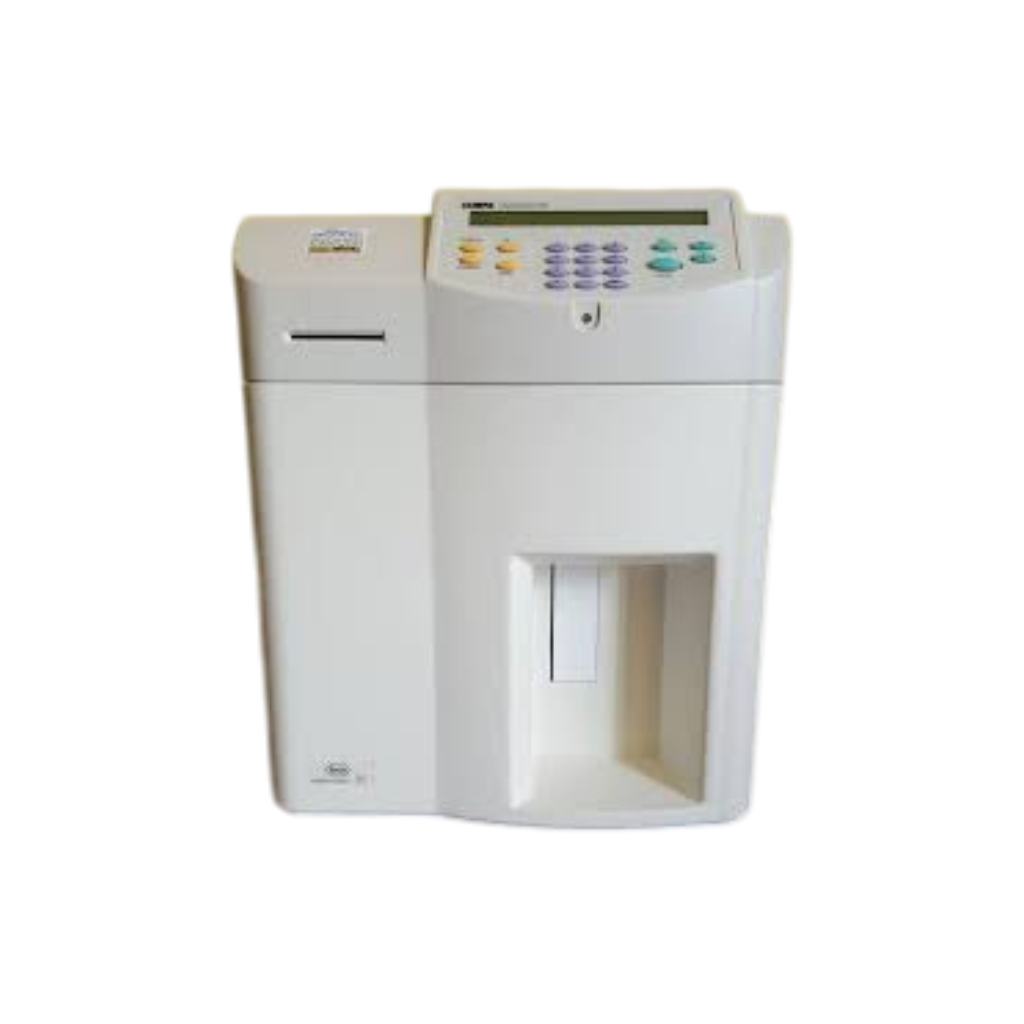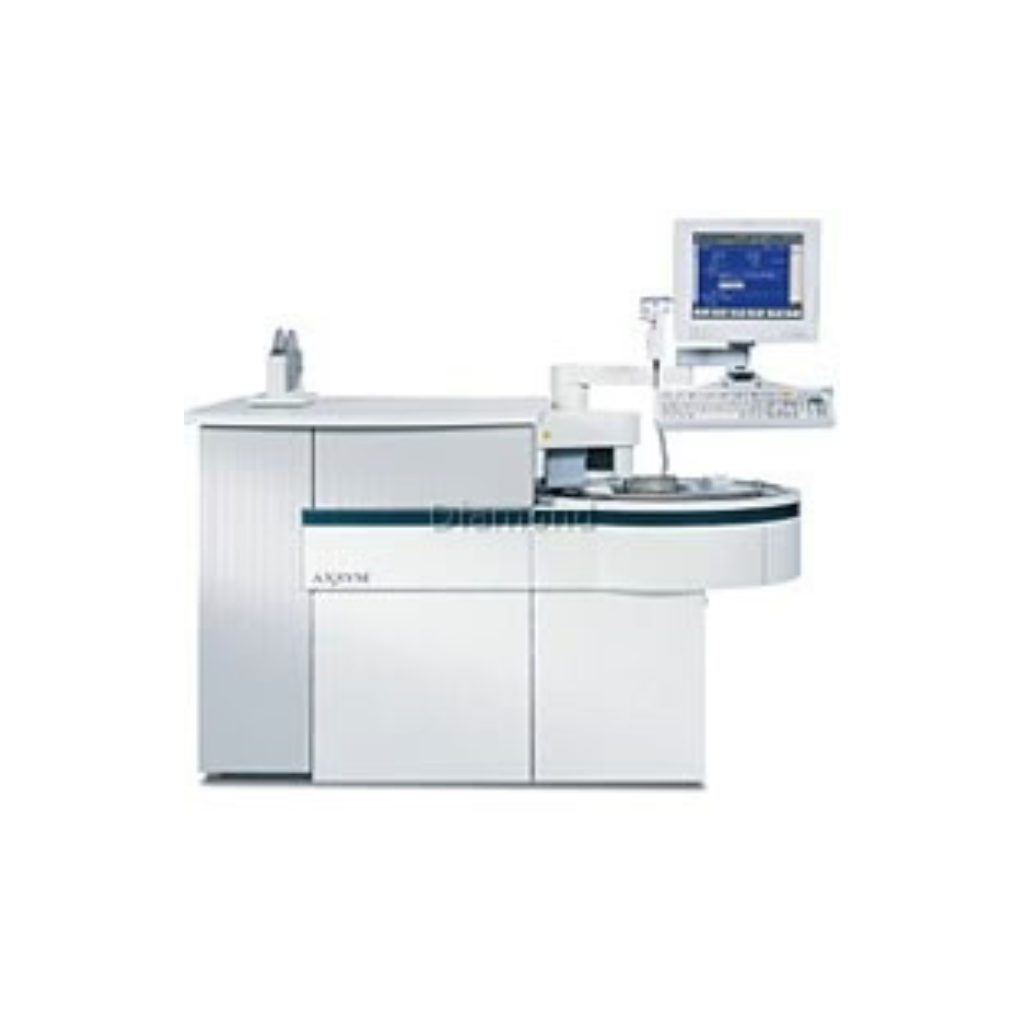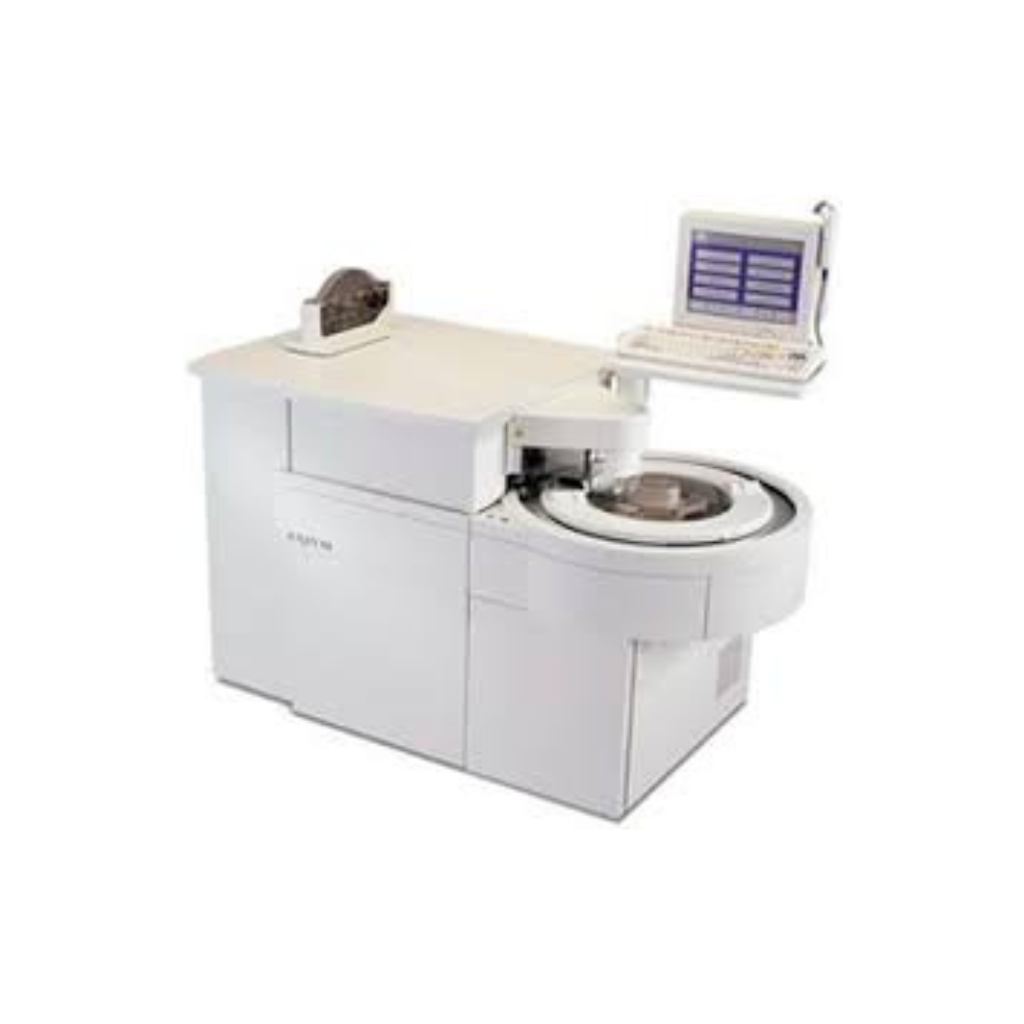Siemens ADVIA 1800 Chemistry Analyzer
Product code: Siemens-Advia-1800
Manufacturer: Siemens Healthineers
Shipping Weight: 1,323.00lbs (600.10kg)

WHY CHOOSE BLOCK SCIENTIFIC?
See why in 2 mins.
Siemens ADVIA 1800 Chemistry Analyzer
Description
Siemens ADVIA 1800 Chemistry Analyzer
The ADVIA 1800® Clinical Chemistry System pushes the limit of productivity of the core lab and meets the turnaround-time (TAT) goals of today’s laboratories. Its extensive and growing menu allows integration of general clinical chemistry testing with testing for drugs-of-abuse, therapeutic drug monitoring (TDM), special chemistry and specific proteins like Cystatin C and CardioPhase® hsCRP.
The ADVIA 1800 Clinical Chemistry System is an ideal solution for mid- to high-volume chemistry analysis. Featuring intuitive new software and capabilities, it’s designed to deliver power and speed to meet the most demanding performance needs. The ADVIA 1800 System moves laboratories to smarter chemistry testing.
Automation ready design
- Point-in-space aspiration offers connectivity to a track, VersaCell or rack handler without robotics or special hardware
- Redundant sample loading for built-in backup and easy handling of non-routine samples
- Direct sampling from track prevents detaining tubes at analyzer and reduces aliquoting
Peak productivity
- Throughput of up to 1,800 tests per hour provides the speed to keep pace with workload peaks
- 200 Basic metabolic panels per hour to meet turnaround-time demands
- Automatic Sample Retain technology provides the ability to perform reruns and dilutions without the need to retrieve primary tubes
- Consolidation power with a comprehensive menu, consistent cycle times, speed and open application capability
Total system reliability
- Minimal-maintenance ISEs
- Robust hardware and simplified software design, with automatic calibration validation and tracking
- Advances in reagent onboard stability, calibration frequency, interference reduction and assay linearity expansion
- Direct water connection
- Remote diagnostics and ILQC (Inter-Laboratory Quality Control) options
Easy efficiency
- Large onboard reagent capacity and optional concentrated reagents reduce interruptions
- High-resolution touchscreen delivers push-button operation
- Reagent pause capability and onboard Sample Pause button make loading easy
- Minimal maintenance requirements, including no-maintenance oil bath
- Sample integrity checking, including serum indices reporting, short sample flagging and clot detection, reduces manual intervention
Features
Throughput of up to 1,800 tests per hour provides speed to keep pace with workload peaks 200 basic metabolic panels per hour to meet turnaround-time demands Large onboard reagent capacity and optional concentrated reagents to reduce interruptions Optimal standardization of reagents and systems for efficient consumable usage Refrigerated onboard storage of controls and reagents for extended stability and increased productivity Automation ready design – no additional hardware required
| Type of System | Random, continuous access, batch, discrete processing |
| Throughput Rate | Up to 1800 tests/hour: 1200 tests/hour colorimetric, 600 tests/hour ISE |
| Assay Capacity Onboard | 55 including 3 ISE |
| Sample Handling | |
| Sample Tubes | 5 mL, 7 mL, 10 mL tubes, 2 mL sample cups |
| Sample Tray | 84 samples, positive sample identification |
| Sample Rack Handler (optional) | Universal 5-position rack, 425 total onboard capacity, continuous feed capability |
| Sample Integrity Check | Qualitative check for hemolysis, lipemia, and icterus |
| STAT Sample Loading | 84, not dedicated |
| Bar Codes | Interleaved 2 of 5, Code 39, Code 128, Codabar (NW7) |
| Auto-repeat | Automatic repeat testing from the retained prediluted sample or original sample |
| Auto-dilution | Automatic dilution from retained prediluted sample |
| Auto-reflex Testing | Automatic ability to perform 3 additional tests based on results of first test |
| Primary Probe | Liquid Level Sensing, Crash Protection, Clot/Clog Detection, Short Sample Detection |
| Microvolume Technology | |
| Automatic Sample Predilution | Samples diluted 1:5 (30 μL sample + 120 μL saline generates up to 15 tests), retained for auto-repeat until results are available |
| Predilution Tray | 120 dilution cuvettes |
| Original Sample Volume | 2 to 30 μL; average of 2-3 μL per test |
| Average Reagent Volume | 80-120 μL per test |
| Storage Capacity Onboard | 25,200 tests average; Usage of concentrated reagents increases maximum capacity |
| Reaction Area | |
| Reaction Tray | 221 reusable plastic cuvettes |
| Cuvette Optical Path Length | 10 mm |
| Reaction Bath | Inert fluorocarbon oil circulation system, 37°C |
| Photometer | 14 fixed wavelengths (340, 410, 451, 478, 505, 545, 571, 596, 658, 694, 751, 805, 845, and 884 nm) |
| Light Source | 12 V, 50 W halogen lamp, cooled by forced water circulation |
| Assay Methods | Endpoint, rate reaction, 2-point rate, multipoint homogeneous immunoassay |
| Reaction Times | 3, 4, 5, 10, 15, and 21 minutes |
| Automatic Correction | Serum blank, cell blank, measurement point change, sample volume change in reassay |
| Point Forwarding | Automatically extends linearity over assay range samples |
| Reagent Handling | |
| Reagent Tray | 2 trays, 56 positions each, refrigerated |
| Reagent Capacity Onboard | 52 colorimetric methods |
| Dispensing System | 2 probes with Liquid Level Sensing and Liquid Surface Verification |
| Reagent Wedges | 20, 40, 70 mL bar-code-labeled wedges |
| Reagent Inventory Management | Tracks tests remaining, lot number, onboard stability, and expiration date |
| Reagent Dilutions | Capability to dilute concentrated reagents onboard |
| Onboard Stability | Up to 60 days |
| Open System Capability | |
| Channels | 200 channels, includes user-defined applications |
| 3rd Party Applications; | Varies by country, can be configured on system |
| ISE | |
| ISE | Indirect simultaneous measurement of Na+, K+, Cl- |
| Sample Volume | 22 μL for all three tests |
| Priming | Automatic priming cycle |
| Electrode Shelf Life | 30,000 samples or 3 months |
| Throughput Rate | 600 tests/hour; 200 tubes/hour |
| Calibration/QC | |
| Calibration Interval | Up to 60 days, tracked by software |
| Auto-calibration/Auto-QC | User-defined time interval or with new reagent container |
| View Calibration/QC Data | Graphical display of calibration curves and QC; Siemens Remote Service QC monitoring |
| Calibration/Control Tray | 61 refrigerated positions for calibrators, controls, and diluents |
| Data Management | |
| Operating Computer | Windows® XP, 1 GB RAM, touch screen monitor 19” |
| System Documentation | Operator manual and assay sheets online |
| Host Interface | RS 232C bidirectional |
| Data Storage | 70,000 patient tests |
| Onboard Maintenance Logs | Schedule and monitor routine maintenance activities via software |
| Host Query | ASCII; system requests work order or batch of work orders from host |
Specifications
| General Specifications | |
| Power Requirements | 200/220/230/240 V +/– 10%, 20 A, 50/60 Hz, 3 KVA |
| Water Requirements | Deionized water from pressurized water (10-30 psi/169-207 KPa) Average Consumption: 30 liters per hour |
| Drain Requirements | Minimum of 40 liters per hour |
| Dimensions | ADVIA 1800: 44.6 (h) x 58.3 (w) x 34.5 (d) in, 113.3 (h) x 148.0 (w) x 87.6 (d) cm |
| Universal Rack Handler: 37 (h) x 29 (w) x 41 (d) in, 86.4 (h) x 73.7 (w) x 104.1 (d) cm | |
| Weight | ADVIA 1800: 1,323 lbs (600 kg) |
| Universal Rack Handler: 178 lbs (81 kg) | |
| Compliance | UL, cUL, CE |
| Noise Specifications | Open cover less than 70 db |
| Average Heat Output | 4,299 BTU/hour @ 50 Hz, 3,023 BTU/hour @ 60 Hz |
| Operating Temperature Range | 18°-30°C/64°-86°F |
| Ambient Humidity | 40%-70% |











